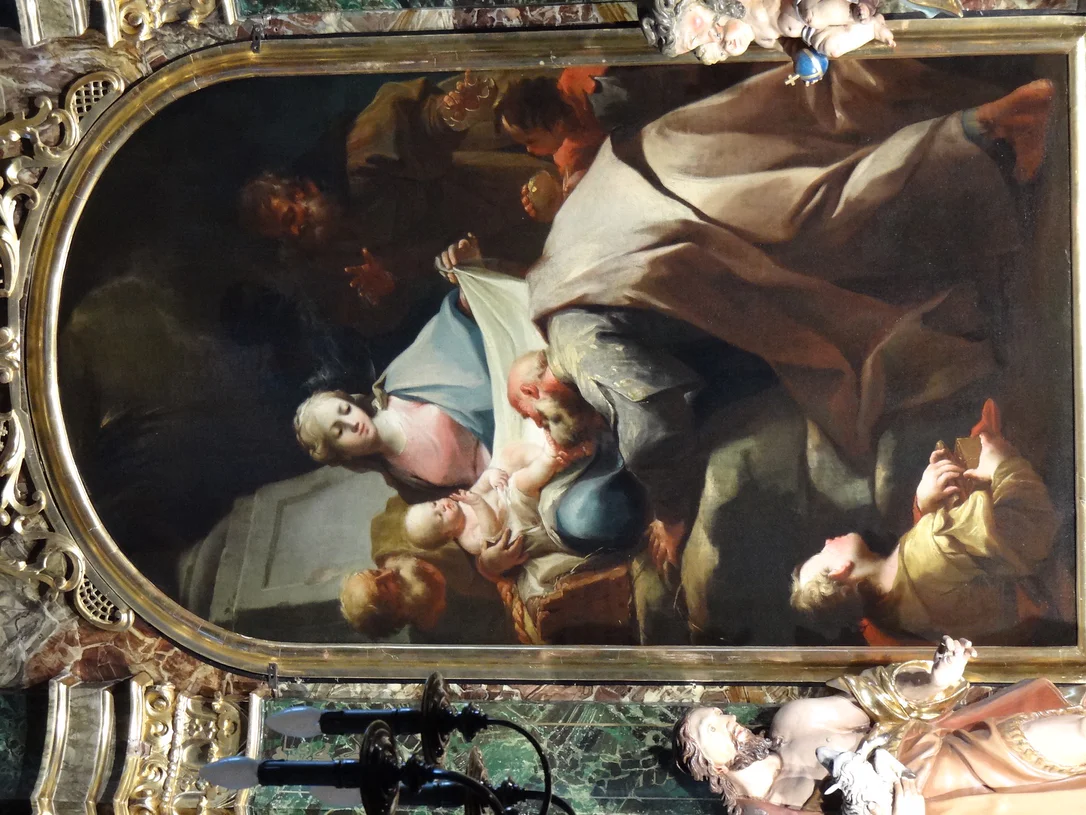The church of St. Hippolytus in Glaiten/Le Coste overlooks the village of St. Leonhard/S. Leonardo, with a spectacular view of the valley.
Thanks to the discovery of traces of ancient settlements, the hill where the church is situated is the site of one of the most important archaeological discoveries in the valley. In the late 1950’s shards of pottery were found near the church and subsequently pieces of baked clay were also unearthed. However, since prehistoric relics linked to the church have not yet been found, the exact date of its origins is not known. In the meantime, archaeologists have postulated that the votive fire coincides with the Laugen-Melaun/Luco-Meluno culture (i.e. late Bronze Age, around 1100 – 900 BCE).
It is even more certain that in the Middle Ages the area was inhabited by farmers, as the farmsteads and other settlements already had Germanic place names.
Although the Church of St. Hippolytus itself dates back to the fourteenth century, it is believed that it originates much earlier, as the name suggests.
Of even greater archaeological importance is the Silberhütt-Höhe structure near Stulles/Stuls. Clearly visible on a hillside, it served as a place of pagan worship. As from 1937, several artefacts including fragments of clay, the relics of a mill as well as a perfectly preserved millstone lever were discovered during a logging operation. These and several other small findings suggest that by the third century these settlements survived till the end of the Iron Age. On the outer edge of the steep hill is a rock wall with a number of mysterious cup-like objects.
Though rarely visited, near the prehistoric archaeological sites and the ancient farm settlement next to the path, lies another noteworthy feature. The Church of St. Hippolytus is the repository of the only fresco cycle in the valley. During the course of minor renovations, remains of frescoes in Giotto’s style depicting scenes from the life of St. Hippolytus came to light. This discovery is of much greater significance and proves that the Florentine school of painting had already spread to Tyrol as early as the fourteenth century. Dating from 1380, these frescoes are attributed to the Bolzano School and may have been commissioned by the young nobleman, Hiltprant von Passeier (deceased in 1418). Due to the damage incurred during construction work in the nineteenth century, the frescoes have only partly been preserved. On the church’s southern façade, there is a portrayal of St. Christopher, which could be the work of the young artist who also painted the interior frescoes. With its coat of arms, the von Passeier nobility has become immortalized, thus increasing the importance of the Church of St. Hippolytus.
The church can be viewed from the outside only.





















































































































